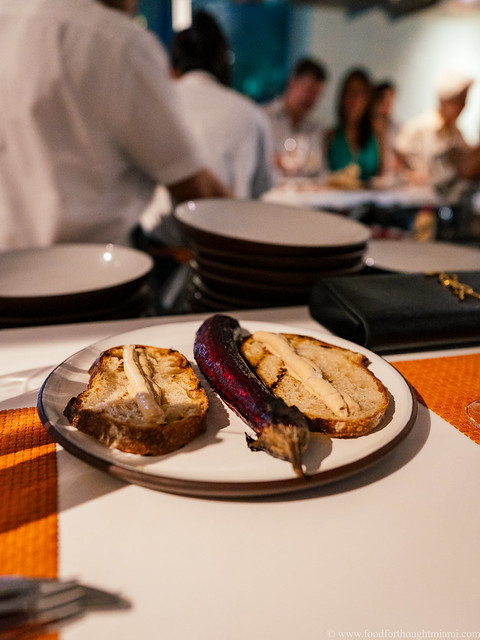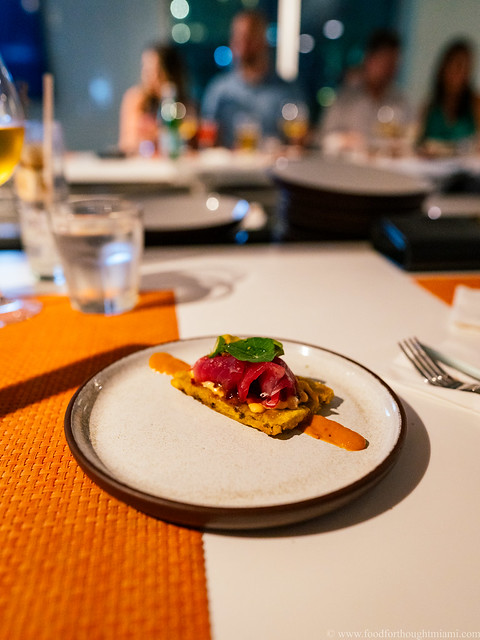For years, Chef Carlos Garcia ran what was generally regarded as one of the top dining destinations in Latin America in his hometown of Caracas, Venezuela. Between 2013-2016, his restaurant Alto was a regular on the Pellegrino "Latin America's 50 Best Restaurants" list. But Venezuela, wracked by political and economic strife, has been a challenging place to live, much less run a restaurant. Like many others fortunate enough to have the opportunity, Garcia found a second home here in Miami, opening a restaurant in Brickell, Obra Kitchen Table, last year.
Despite everything happening at home, Garcia has managed to keep Alto open while running Obra here – no easy feat amidst protests, government clampdowns, and food shortages. He also helps operate Barriga Llena Corazón Contento (Full Belly Happy Heart), an organization that supplies free meals to children in Venezuela, and Recipes for Change, which teams up local chefs, farmers and others to serve people in need here in South Florida. Somewhere in there, he found time to put on a dinner for Cobaya, gathering thirty diners around the counter at Obra for a seven-course dinner.[1]
(You can see all my pictures in this Cobaya Obra with Chef Carlos Garcia flickr set).
I really love the layout at Obra, where there's a smattering of tables in front, but the bulk of the seating is at a long, three-sided counter that surrounds the open kitchen, a variation on the sort of horseshoe type counter you would find in old diners like S&S.
Chef Garcia started the meal with some snacks: a puffy arepita topped with sea urchin and guasacaca sauce (a Venezuelan staple that I think of as either a salsa verde bolstered with avocado, or a very loose guacamole), and some feathery, crisp chicharrones for scooping up a cauliflower cream enriched with a generous dollop of trout roe. A great start.
To follow, a whole Japanese eggplant (here's where you can make an entirely appropriate use of the 🍆 emoji), basted in beet juice and red wine before being roasted until it's all supple and silky inside. The menu listed this as "eggplant + goat cheese + red wine," but those toasts were instead topped with foie gras butter – a substitution I fully support. While foie often gets matched up with sweet, fruity flavors, I really enjoy when it gets to play with more savory, vegetal elements.
Chef Garcia called his tostone a "toast/ton," which he then topped with ribbons of fresh raw tuna, avocado, jalapeño, and a spicy guava sauce.
(continued ...)









